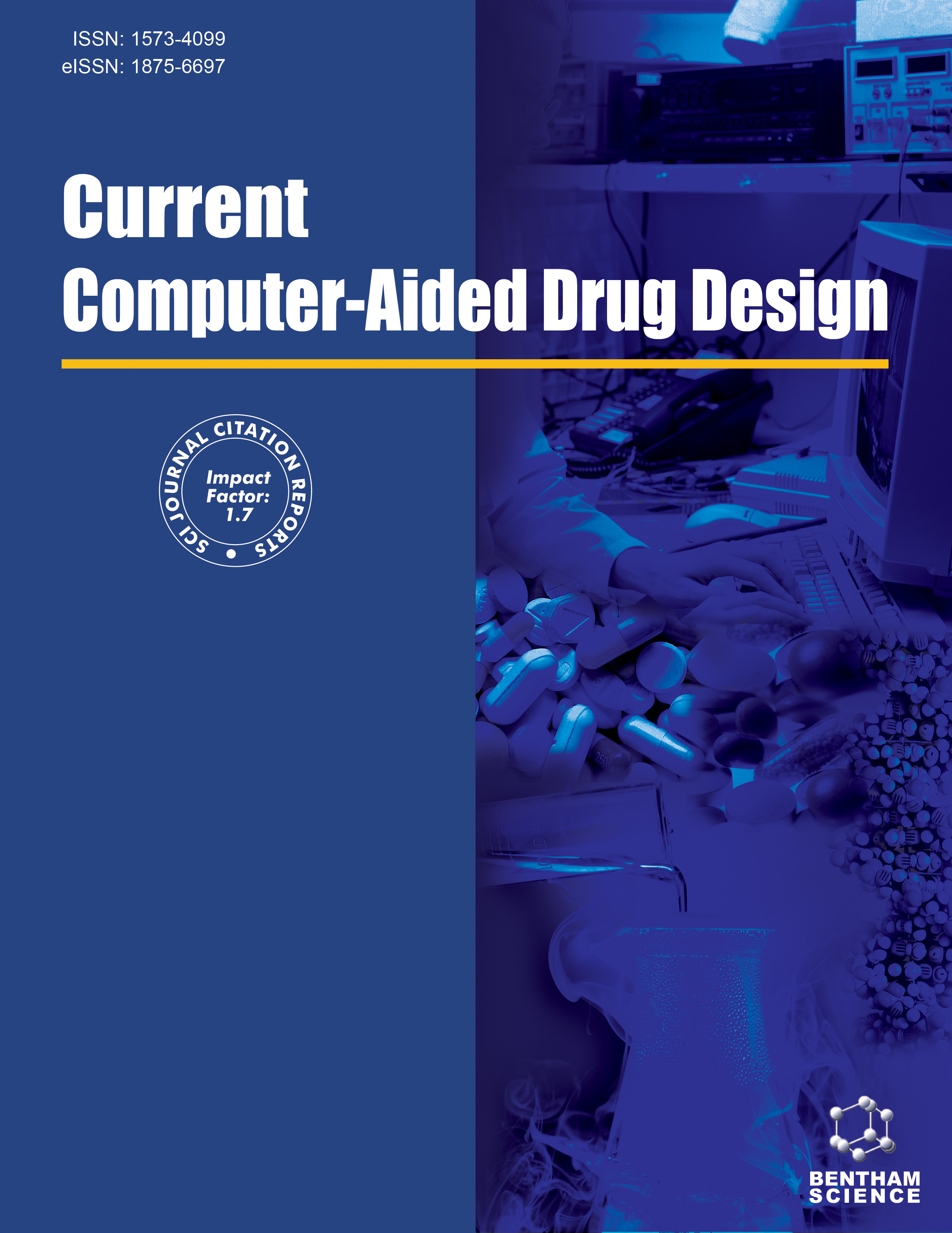- Home
- A-Z Publications
- Current Computer - Aided Drug Design
- Previous Issues
- Volume 2, Issue 4, 2006
Current Computer - Aided Drug Design - Volume 2, Issue 4, 2006
Volume 2, Issue 4, 2006
-
-
Editorial [Hot Topic: The Estimation of Lipophilicity for QSAR Studies (Guest Editor: Miroslav Kuchar)]
More LessLipophilicity is the molecular property, which plays a prominent role in the mutual interactions of biologically active substances. Therefore, it is not surprising that lipophilicity has been in the focus of attention at the study of the influence of external compounds on living bodies. The first attempts - more than century ago - to find the relationships between biological activity and lipid solubility are connected with the works of Mayer Read More
-
-
-
Progress in the Use of HPLC for Evaluation of Lipophilicity
More LessAuthors: Antoni Nasal and Roman KaliszanModern methods of organic synthesis allow an exponential increase in the number of compounds for screening as drug candidates, often as multicomponent mixture. That requires procedures for assessing lipophilicity parameters that are rapid and can be employed with very small samples. Especially suitable appear to be the methods providing the data needed without prior isolation of an individual component of a Read More
-
-
-
The Use of Immobilised Artificial Membrane (IAM) Chromatography for Determination of Lipophilicity
More LessThis review discusses Immobilised Artificial Membrane (IAM) HPLC technique in terms of the structure of IAM phases, experimental methods, and information content. In a first part, the relations between pharmacokinetics and lipophilicity are discussed. Lipophilicity in n-octanol of ionisable compounds is shortly examined as a base for further discussion. Particular emphasis is placed on the meaning of phospholipids as partiti Read More
-
-
-
Hydrogen Bonding Contribution to Lipophilicity Parameters. Hydrogen Acceptor and Hydrogen Acceptor-Donor Parameters for Substituents Bonded to sp2-Hybridized Carbon Atoms
More LessHydrogen bonding parameters for QSAR are reviewed. Forty five hydrogen bonding parameters for hydrogen acceptor groups and fifteen for hydrogen acceptor and donor groups for substituents bonded to sp2 hybridized carbon atoms (ήXPh) were derived from1-octanol/water partition coefficients by the method previously used for substituents bonded to sp3 hybridized carbon atoms (ήXAk). The parameters derived fro Read More
-
-
-
The Topology of Molecule and Its Lipophilicity
More LessAuthors: Vijay K. Agrawal, Jyoti Singh, Bruno Louis, Shobha Joshi, Ashok Joshi and Padmakar V. KhadikarThis review describes topology of the molecule and lipophilicity in that several examples of topological estimation of lipophilicity of the molecule are discussed critically. In doing so, the earlier non-topology methods used to estimate lipophilicity was first discussed critically. Usually, lipophilicity is referred to as partition of organic compound between octanol-water systems, however, some other solvent-systems were also examine Read More
-
-
-
The Role of Hydrophobicity in Toxicity Prediction
More LessThe influence of hydrophobicity on toxic potency has been known for over a century. This paper summarises some of the key areas where hydrophobicity, in the form of the logarithm of the octanol-water partition coefficient (log P), is incorporated into quantitative structure-activity relationships (QSARs) for toxicity. Log P is frequently seen in QSARs for acute aquatic toxicity, especially for chemicals acting by non-rea Read More
-
-
-
MEET THE GUEST EDITOR
More LessMiroslav Kuchar studied organic chemistry at Prague Institute of Chemical Technology, Department of Macromolecular Chemistry, from where he graduated in 1958. He finished his postgraduate studies from the Research Institute for Pharmacy and Biochemistry, completing his PhD on medicinal chemistry in 1969. Moreover, he received his DSc degree in 1993 from Charles University with the dissertation on the use of Q Read More
-
Volumes & issues
-
Volume 21 (2025)
-
Volume 20 (2024)
-
Volume 19 (2023)
-
Volume 18 (2022)
-
Volume 17 (2021)
-
Volume 16 (2020)
-
Volume 15 (2019)
-
Volume 14 (2018)
-
Volume 13 (2017)
-
Volume 12 (2016)
-
Volume 11 (2015)
-
Volume 10 (2014)
-
Volume 9 (2013)
-
Volume 8 (2012)
-
Volume 7 (2011)
-
Volume 6 (2010)
-
Volume 5 (2009)
-
Volume 4 (2008)
-
Volume 3 (2007)
-
Volume 2 (2006)
-
Volume 1 (2005)
Most Read This Month
Article
content/journals/cad
Journal
10
5
false
en


